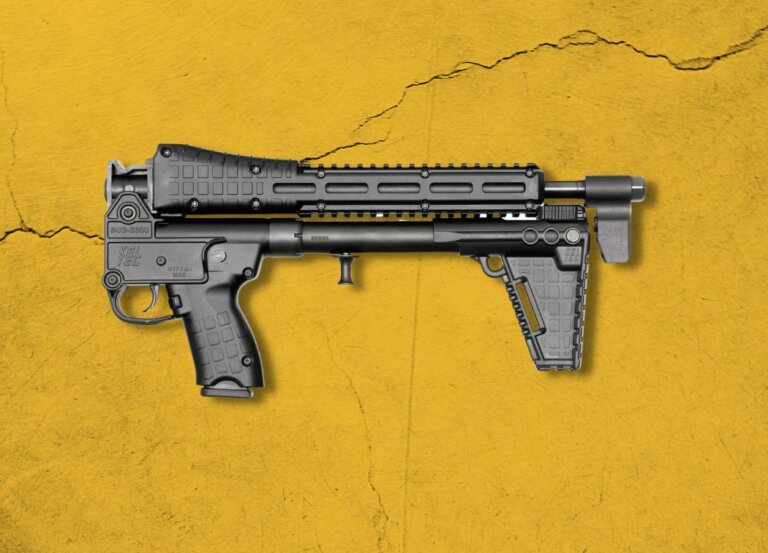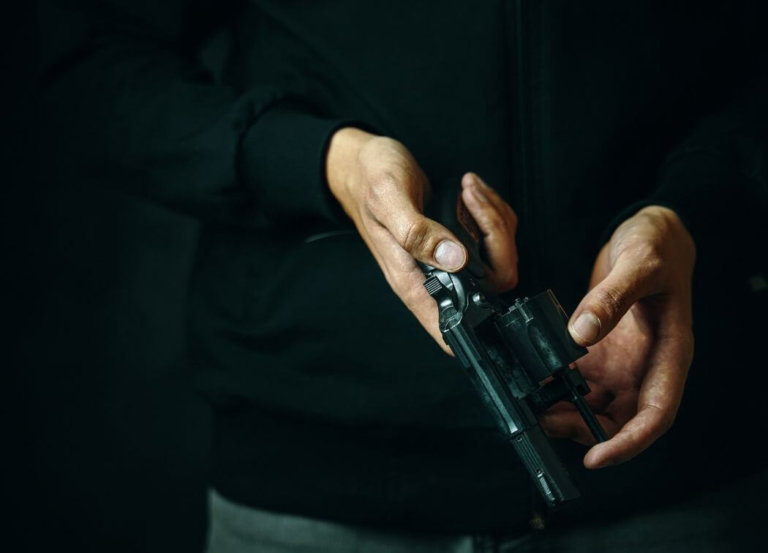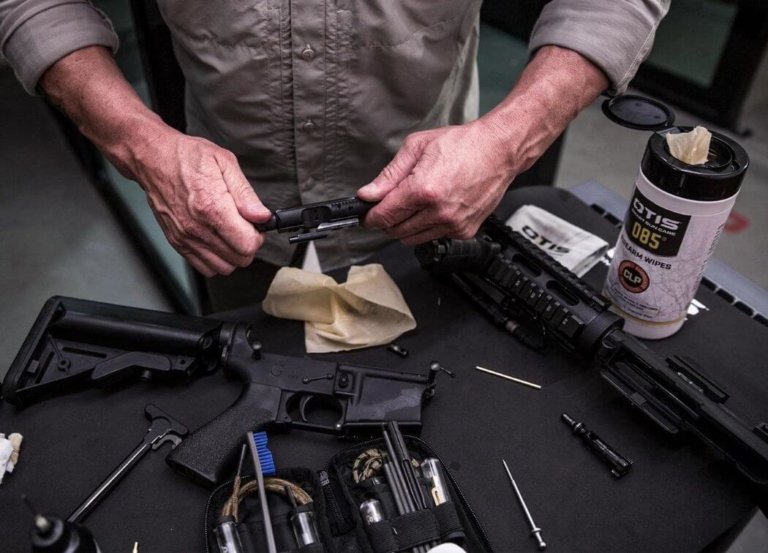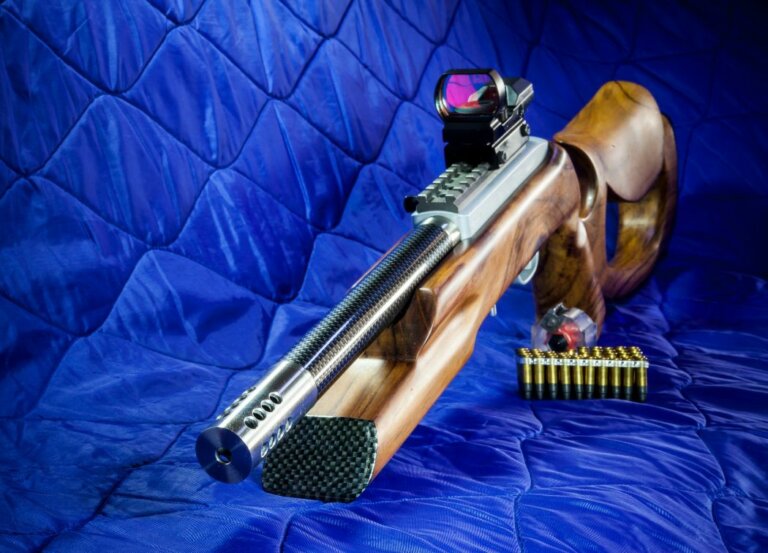How To Tell If Your Gun Is Rimfire Or Centerfire
Mention a rimfire cartridge, and everyone automatically assumes you’re talking about the .22LR. We have, of course, many different types of rimfire and centerfire cartridge options available today.
Identify whether your gun uses a rimfire or centerfire cartridge by seeing where the firing pin protrudes from the breech block. If the firing pin is centrally located in the breech, the weapon is a centerfire. If the firing pin protrudes from the outer edge of the breech, it’s a rimfire.
Being handed a gun with no history and unknown caliber markings can be pretty daunting to get shooting again. Determining if the gun shoots centerfire or rimfire ammo is an excellent place to start. Let’s explore how to tell the difference.

- How To Know If Your Gun Is Rimfire Or Centerfire
- Firing The Wrong Cartridge In Your Gun – Is It Dangerous?
- How to know if my handgun has a centerfire or rimfire
- Popular Rimfire Cartridges Available Today
- Is Rimfire Ammunition More Affordable Than Centerfire?
- Pros and Cons Of Rimfire Cartridges
- Pros and Cons Of Centerfire Cartridges
- Which is better, Rimfire OR Centerfire?
- Conclusion
How To Know If Your Gun Is Rimfire Or Centerfire
Cartridge ignition systems fall into two categories, rimfire, and centerfire. The most famous rimfire cartridge is the various .22 BB Cap, .22 Short, .22 Long Rifle. Centerfire cartridges are available in a myriad of caliber types and are by far the most popular cartridge ignition system in the world today.
Telling the difference between a rimfire and a centerfire cartridge is easy. When viewing the base of the cartridge case (The flat end furthest from the bullet head), the rimfire will have a flat primer-less base, always with a rim. The cartridge is a rimfire when no primer or primer pocket is visible.
Centerfire cartridges can either be rimmed or rimless, depending on the caliber. All centerfire cartridges have a primer pocket located centrally in the base of the cartridge case. The primer which fits into the primer pocket will also be visible as a small circle located precisely in the middle of the cartridge base.
All self-contained cartridges use a priming compound to ignite the propellent located inside the case. The propellant explodes inside the cartridge case and propels the bullet down the barrel to the target.
The priming compound for a rimfire cartridge is located inside the cartridge case inside a small hollow rim of the cartridge case. The priming compound is inserted into the cartridge case and allowed to dry, the propellent follows next, and lastly, the bullet head completes the cartridge.
Priming compound is specially formulated by combining various chemicals. The formulation ignites and sets off the firing sequence when struck by the firing pin.
The centerfire cartridge does not have an internal priming compound in the cartridge. Instead, a cup-shaped primer containing a small anvil is filled with a priming compound and pressed into the primer pocket in a cartridge case base.
The priming compound ignites when the primer is struck, directing its flame through the ignition hole into the cartridge where the propellent is lit, firing the gun.
Firing The Wrong Cartridge In Your Gun – Is It Dangerous?
Fortunately, cartridge tolerances and gun chambers make it pretty much impossible to load the incorrect cartridge into a gun. I’ve personally seen a bloke on the local shooting range struggling to get a proper grouping out of his 30-06. It turned out his rifle managed to fire .308 win cartridges without missing a beat. Crazy stuff happens.
The reality is that most guns will only accept the cartridge for which they’re designed. Of course, the possibility exists that a .357 Magnum wad-cutter round may find itself into a .38 special revolver, but in its standard form, the cylinder won’t close, so it will not fire.
More accidents happen due to a blocked barrel, double-loaded rounds, or leaving the bore sighter in the barrel when pulling the trigger.
Worst case scenario, though, is that the weapon could fly apart, injuring the shooter and bystanders or even causing someone’s death.
Interestingly enough, in the 1990s, Phillips and Rodgers Inc designed a revolver capable of shooting any 9mm cartridge ranging from .38 special, .357 magnum, 9x17mm (using cartridge clips), 9x19mm, and so on, twenty-five cartridges in total. Unfortunately, the variety was too broad, and the concept never took off. Only a few hundred weapons were made.
How to know if my handgun has a centerfire or rimfire
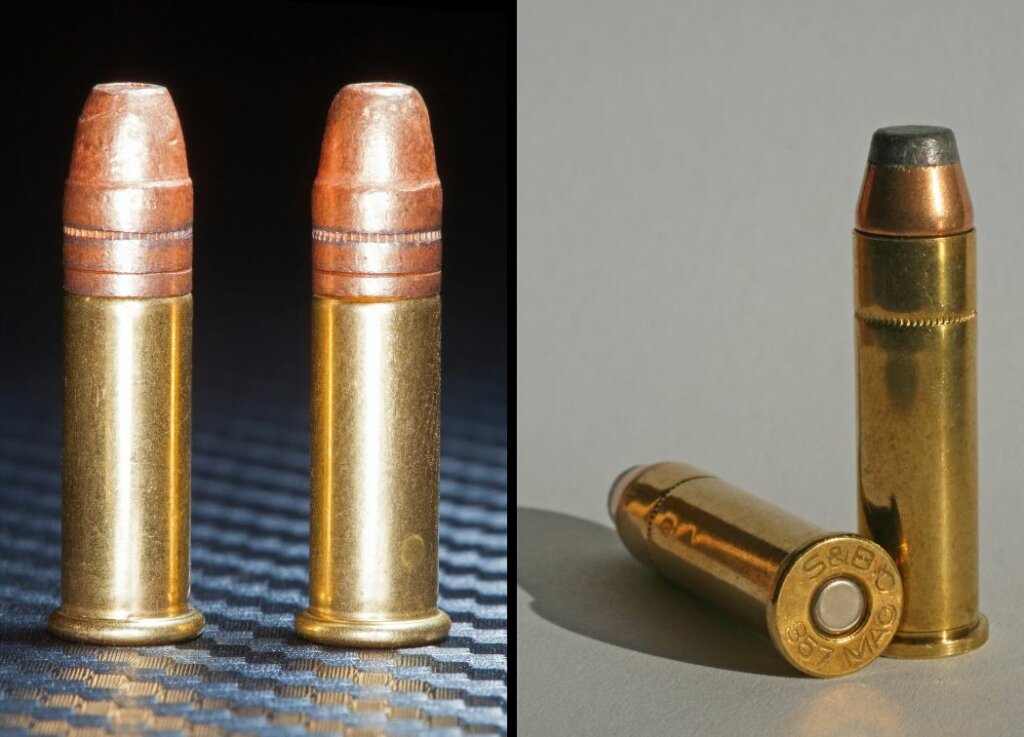
Significantly few weapons indicate if the gun is a rimfire or centerfire through the inscriptions or stamped warnings on the firearm’s barrel, slide, or frame. I’m assuming the manufacturers trust that the weapon owner would be aware of this crucial info from the outset and use the correct ammunition.
Generally, the caliber is marked on the weapon, so it’s up to the person buying ammo for the gun to make sure the right choices are made.
Let’s assume you inherit a nondescript weapon from a long-lost family member, and you’re presented with the gun. How would you tell if it’s a centerfire or rimfire? First of all, the caliber will be stamped somewhere on the weapon. If the caliber doesn’t give the game away, a look at the bolt face will.
Ensure that the weapon is unloaded, then disassemble the gun to expose the bolt face by removing the slide if it’s a pistol or removing the bolt if the firearm is a rifle. The bolt face is the front section of the bolt that pushes up against the cartridge base when the action is closed.
The firing pin is located centrally in the bolt face for a centerfire cartridge. The firing pin is visible as a hole in the middle of the bolt face that would align with the primer, situated in the center of the cartridge base.
Rimfire cartridges would have the firing pin hole located on the rim of the bolt face or visibly off-center in the case of a pistols bolt face which is integral with the slide.
Revolvers present a bit more of a challenge as the firing pin exit hole is obscured by the cylinder when locked into position. The best option is to locate the firing pin hole in the revolver frame and make a small mark on the frame on either side of the firing pin with a pencil or erasable whiteboard marker in line with the firing pin.
Close the cylinder and use a torch if necessary; see where the mark on the outside of the frame aligns in relation to the cartridge chamber aligned with the firing pin. If the mark on the frame is located centrally with the cylinder, it’s a centerfire. If the firing aligns with the rim of where the cartridge would be, it’s a rimfire.
Alternately you could shine a torch down the barrel of the unloaded revolver if the bore is large enough. Looking down the barrel with the aid of the torch will reveal the location of the firing pin in relation to the bore.
Lever action or semi-automatic rifles only require the bolt to be retracted slightly until the bolt face can be seen clearly. The location of the firing pin can be easily seen as a hole in the bolt face.
Lastly, a handy tip for older weapons is to look for a shiny circle on the bolt face caused by the cartridge pushing back against the face when firing. The centerfire firing pin hole will be in the middle of this ring, while the rimfire firing pin is located at the outer edge of the circle.
Popular Rimfire Cartridges Available Today
The most popular rimfire cartridges available today are the various .22 caliber cartridges. The list below shows those the average rimfire enthusiast would likely come across.
- .22 BB Cap
- .22 Short
- .22 Shot Shell
- .22 Long
- .22 Long Rifle
- .22 Rimfire (.22WRF)
- .17 Winchester Super Magnum
- .17 Hornady Mach 2 (.17HM2)
- .25 Short (.25 Bacon & Bliss)
- .25 Stevens
- 5mm Remington Rimfire Magnum (5mm RFM)
- .44 Henry or .44 Rimfire
- .50 Remington Navy
Is Rimfire Ammunition More Affordable Than Centerfire?
Rimfire ammunition is generally more affordable than centerfire ammunition as it requires less material and fewer steps in the manufacturing process to produce.
Significantly more cartridges are made for calibers such as the .22’s in a run than centerfire cartridges bringing down the average cost per cartridge manufactured. US Stats indicated that around five billion rimfire cartridges are made annually, the most being .22 caliber. I doubt if all other cartridges combined would exceed that number annually.
Rimfire cartridges are generally smaller and have thinner case walls than most centerfire cartridges. Less case material is required to make the cartridge casing. A smaller case also means less powder or propellent is needed to achieve decent velocities. A smaller bullet also means less bullet head material is required. Last but not least, no separate primer is required as the rimfire casing is primed internally.
The rimfire cartridge case is an extruded long walled cup that has been pressed down at the base to form a rim that will contain the priming compound. Minimal machining is required to create the casing.
Centerfire cartridge casings require significantly more machining and shaping to get the basic shell casing to a stage where it can be loaded. Most rimfire .22 caliber cartridge casings are straight wall cases that don’t require a shoulder and primer pocket to be machined into the casing. Belted centerfire casings need additional work to introduce the belt to be worked into the manufacturing process.
The centerfire primer itself needs to be made and assembled for use, requiring a specialized manufacturing process. Compare this to the rimfire, where a drop of wet priming compound is dropped into the rimed case. The case is spun to force the priming compound into the cartridge rim and allowed to dry.
All that remains is to add the propellent and to crimp the bullet head into place, and you’re ready for packaging.
Pros and Cons Of Rimfire Cartridges
Rimfire cartridges have pros and cons that are often so obvious that we don’t recognize them anymore. Let us explore these below.
Pros:
- Relatively cheap to buy (more bang for your buck)
- Great for plinking
- Competitive shooting
- Small game hunting (caliber dependant)
- .22’s are great starter guns
- Low recoiling ammunition
Cons:
- Specialized rimfire cartridges can be hard to find
- More prone to misfiring
- Not well suited to self-defense applications
- Can’t reload the spent cartridges
- Reliant on factory ammunition only
- Limited caliber choice
- Lower velocities thus generally not suited to long-distance shooting
- No viable shotgun offering is available
Pros and Cons Of Centerfire Cartridges
Pros and cons exist for types of ammunition. Let us explore these for centerfire ammo.
Pros:
- Cartridge casings are reuseable (reloadable)
- Higher velocity ammo so well suited to long-distance shooting
- Wide variety of calibers available to suit all needs
- Well suited to competitive shooting
- Well suited for hunting
- Well suited to self-defense (handguns)
- Very reliable
- Bullethead options are vast
Cons:
- Ammo is generally significantly more expensive than rimfire ammo
- Guns using centerfire ammo are mostly more expensive than rimfire guns
- More recoil was generated due to the larger bullets and higher velocities
- Generally, the guns are bigger and heavier to suit the caliber
- Generate more noise than centerfire ammunition
Which is better, Rimfire OR Centerfire?
In my humble view, there is no choice to be made. Rimfire and centerfire cartridges and guns have two different roles in the shooting world. Rimfire cartridges, by this, I mean .22 caliber cartridges, and maybe the .17’s are popular today because they fill a niche in recreational shooting and hunting and competitive disciplines.
The rimfires are well suited for both young and old, experienced and inexperienced enthusiasts. The mild manner in terms of noise, recoil, and cost means that there’s a whole lot more shooting fun to be had with the lowly rimfire than most centerfires.
Centerfire weapons tend to be specific to a task like handguns for self-defense, rifles for hunting, shotguns for wing shooting; Well, you get the picture. The cost of buying a centerfire gun can be very high. As such, you’ll find that these weapons are built for a specific task.
The rimfire cartridge and the centerfire cartridge complement each other very well. Over time the unpopular or impractical calibers have disappeared from the shelves and replaced with better offerings. Fortunately for both rimfire and centerfire enthusiasts, we’ve never been better off in terms of choice than what we are right now.
Conclusion
Determining if your gun uses a rimfire or centerfire cartridge is as simple as seeing where the firing pin is located in breach block or bolt face. Rimfire weapons strike the outermost edge of the cartridge rim to ignite the primer material and fire the gun.
Centerfire gun firing pins strike the primer centrally located in the base of the cartridge. Rimfire firing pins are thus located on the outer rim of the bolt face, while the centerfire ones are located in the middle of the bolt face.

